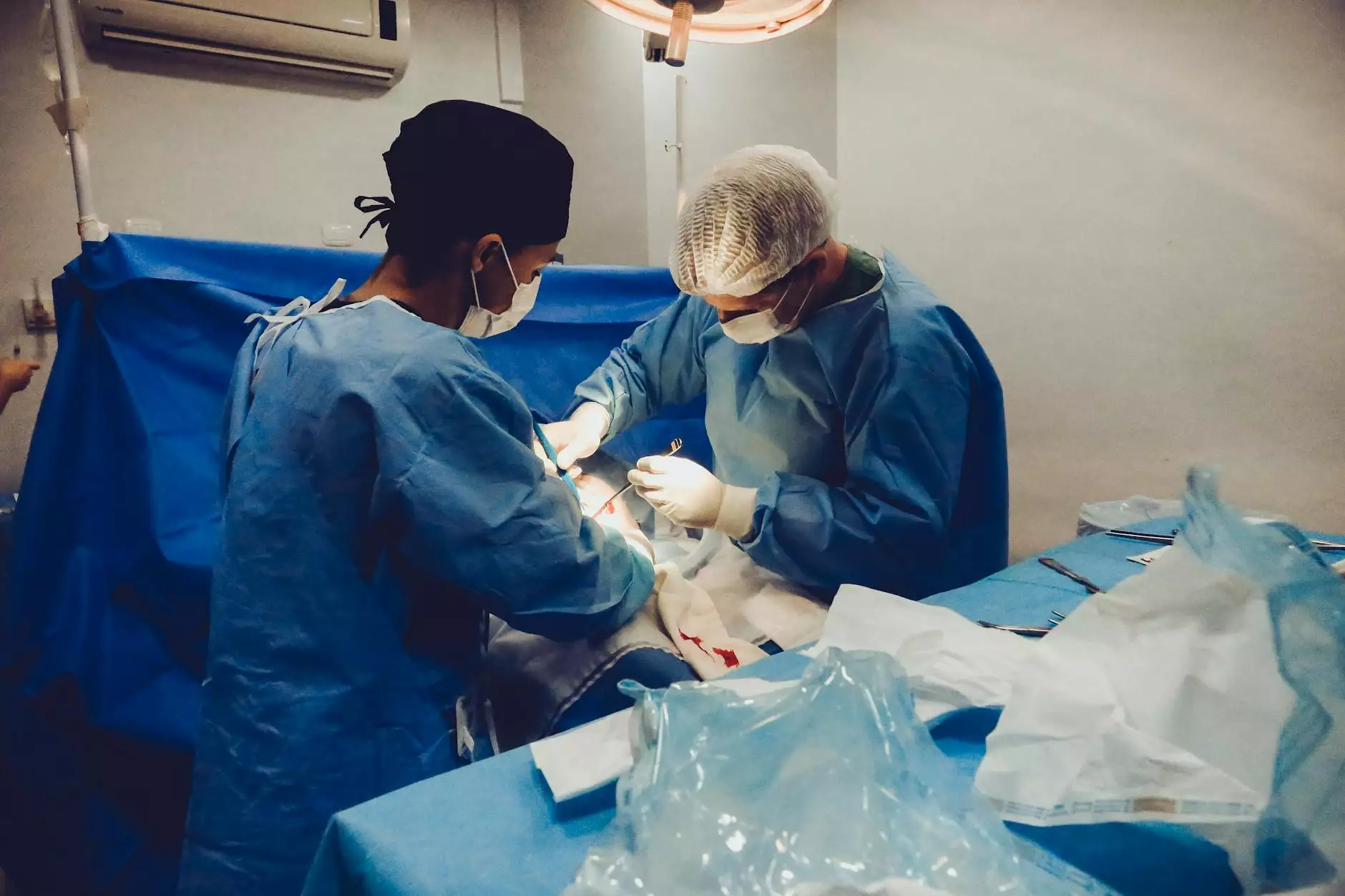Bilateral Oophorectomy and Salpingectomy: Understanding the Procedure and Its Benefits

Bilateral oophorectomy and salpingectomy are vital surgical procedures that can significantly impact women's health. These operations are typically performed to address various medical conditions affecting the ovaries and fallopian tubes, including systemic conditions that can lead to cancer or other serious health issues.
What is Bilateral Oophorectomy?
Bilateral oophorectomy refers to the surgical removal of both ovaries. This procedure is indicated in various clinical scenarios, including but not limited to:
- Ovarian cancer: A primary reason for the procedure, especially for women with high-risk factors.
- Endometriosis: Chronic pain and other complications can lead to the recommendation of this surgery.
- Ovarian cysts: Difficult-to-manage cysts that do not respond to other treatments.
- Genetic predisposition: Women with mutations in BRCA1 or BRCA2 genes may opt for oophorectomy to prevent ovarian cancer.
What is Salpingectomy?
Salpingectomy is the surgical removal of one or both fallopian tubes. Similar to oophorectomy, salpingectomy can be recommended for a variety of reasons:
- Fallopian tube cancer: Rare but serious, necessitating prompt intervention.
- Ectopic pregnancy: When a pregnancy occurs outside the uterus, it may endanger the woman's health.
- Preventive measure: Some women choose this surgery to reduce the risk of ovarian cancer.
Why a Combined Procedure?
When performed together, bilateral oophorectomy and salpingectomy provide a more comprehensive approach to addressing reproductive health concerns. The combination of these procedures may be essential in cases where both the ovaries and the fallopian tubes are compromised or pose a significant risk to women's health.
Benefits of Bilateral Oophorectomy and Salpingectomy
The decision to undergo a bilateral oophorectomy and salpingectomy is often not taken lightly. The primary benefits of the procedure include:
- Significantly reduced cancer risk: For women at high risk of ovarian or fallopian tube cancer, removal of these organs can dramatically lower the likelihood of developing cancer.
- Symptom relief: Women suffering from severe endometriosis or recurrent ovarian cysts often find significant relief from their symptoms post-surgery.
- Adequate management of genetic risks: Women with certain genetic markers may undergo this surgery as a proactive measure to maintain their health.
Preparing for the Surgery
Preparation for a bilateral oophorectomy and salpingectomy involves several crucial steps:
- Thorough Assessment: A comprehensive evaluation by a qualified healthcare provider.
- Discussion of Medical History: Sharing all pertinent medical information and previous surgeries.
- Informed Consent: Understanding the procedure, risks, and possible outcomes.
- Logistical Preparations: Arranging for support during recovery.
The Surgery: What to Expect
The surgical procedure can be performed via two primary methods: open surgery or laparoscopic surgery.
Open Surgery
In open surgery, a larger incision is made in the abdomen, allowing direct access to the reproductive organs. This method may be necessary if there are complications or particular conditions that warrant it.
Laparoscopic Surgery
Laparoscopy is a minimally invasive approach commonly used today. It involves several small incisions in the abdomen, through which a camera and surgical instruments are inserted. This method usually results in:
- Shorter recovery time
- Less postoperative pain
- Reduced scarring
Postoperative Care and Recovery
Recovery from a bilateral oophorectomy and salpingectomy varies from patient to patient and depends on the method used. General guidelines for postoperative care include:
- Rest and Recovery: Allowing time for the body to heal is crucial.
- Follow-up Appointments: Keeping all scheduled follow-ups to monitor recovery.
- Recognizing Symptoms: Being aware of symptoms such as sudden pain, fever, or unusual discharge and reporting them to a healthcare provider.
Long-term Considerations
After undergoing a bilateral oophorectomy and salpingectomy, women should consider long-term health implications:
- Hormonal Changes: Removal of the ovaries impacts hormone levels, possibly leading to symptoms of menopause.
- Therapeutic Options: Hormone replacement therapy (HRT) may be discussed with your doctor.
- Regular Check-ups: Continuous monitoring for other health risks is essential.
Expert Insights from Dr. Seckin
Dr. Seckin is renowned for his expertise in the field of obstetrics and gynecology. With years of experience in managing complex surgical cases, Dr. Seckin brings a wealth of knowledge to the procedure of bilateral oophorectomy and salpingectomy. His compassionate approach ensures that patients are well-informed and comfortable with their choices.
Conclusion
Understanding the intricacies of bilateral oophorectomy and salpingectomy empowers women to make informed decisions about their health. These procedures can provide significant benefits, especially for those at risk of ovarian or fallopian tube diseases. Consulting with healthcare professionals, such as Dr. Seckin, ensures that patients receive personalized advice tailored to their unique situations.
For more information or to schedule a consultation, visit drseckin.com. Your health is our priority, and we are here to support you through every step of your healthcare journey.









